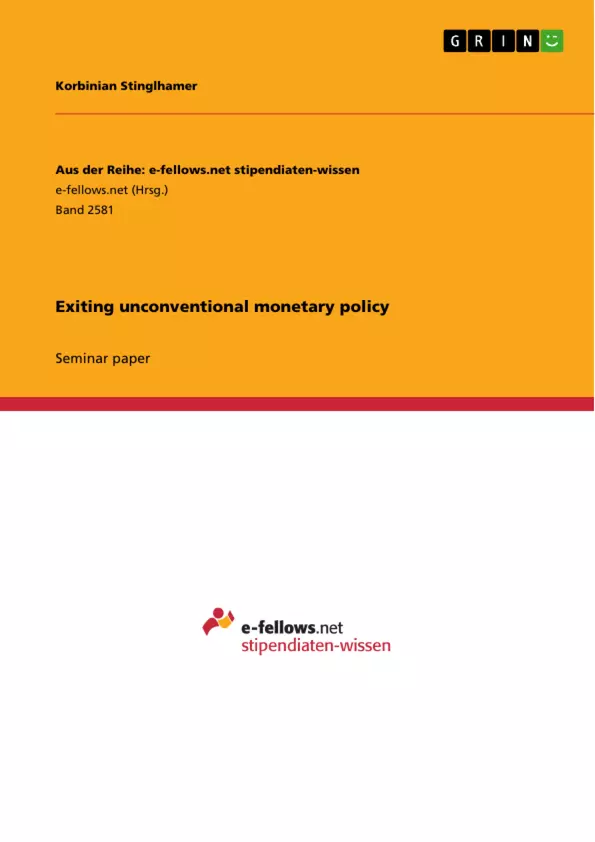The paper analyzes the unconventional monetary policies that were implemented by the Federal Reserve Bank, the Bank of England, the European Central Bank, and the Bank of Japan during their post-crisis transitions. Next, potential challenges involved in the exit will be analyzed.
During the financial crisis many central banks in the world implemented “unconventional monetary policy” measures, such as balance-sheet policies, forward guidance, and negative interest rates. Once the financial system stabilizes, the difficult process of returning back to conventional monetary policy begins.
For this reason, this paper analyzes the unconventional monetary policies during post-crisis transitions and potential challenges involved in the exit. The analysis suggests that a transition from unconventional monetary policies should be accomplished smoothly, without exceeding inflation, harming economic recovery, or destabilizing financial markets.
Furthermore, the analysis suggests to make use of forward guidance in order to prepare the market for the exit and to increase its potential speed. However, the optimal exiting policy depends largely on present and future economic conditions of the respective currency region. In order to analyze these conditions and determine the ideal exiting strategy for each central bank, further investigations need to be done.
Inhaltsverzeichnis (Table of Contents)
- Introduction
- Background
- Categories of unconventional monetary policies
- Commonalities and differences between major central banks
- Difficulties with the exit of unconventional monetary policies
- Timing of the exit
- Duration of the exit
- The role of extended guidance
- Evaluation and conclusion
Zielsetzung und Themenschwerpunkte (Objectives and Key Themes)
This paper analyzes the unconventional monetary policies implemented by major central banks during their post-crisis transitions, specifically focusing on the Federal Reserve Bank (Fed), the Bank of England (BOE), the European Central Bank (ECB), and the Bank of Japan (BOJ). The paper investigates the challenges involved in exiting these policies, aiming to determine the optimal strategies for a smooth transition that avoids inflation, hinders economic recovery, or destabilizes financial markets.
- The transition from unconventional monetary policies to conventional monetary policies.
- The potential challenges associated with the exit process.
- The role of forward guidance in preparing the market for the exit.
- The impact of the exit on economic recovery and financial stability.
- The importance of considering current and future economic conditions in determining the ideal exit strategy.
Zusammenfassung der Kapitel (Chapter Summaries)
- Introduction: This chapter introduces the concept of unconventional monetary policies and their implementation during the financial crisis. It highlights the need for an exit strategy to avoid potential negative economic consequences.
- Background: This chapter delves into the categories of unconventional monetary policies, providing examples and explaining their mechanisms. It includes a table categorizing the various measures.
Schlüsselwörter (Keywords)
The paper focuses on unconventional monetary policies, exit strategies, central bank balance sheets, forward guidance, economic recovery, financial stability, inflation, and the post-crisis transitions of major central banks like the Fed, BOE, ECB, and BOJ.
- Citation du texte
- Korbinian Stinglhamer (Auteur), 2016, Exiting unconventional monetary policy, Munich, GRIN Verlag, https://www.grin.com/document/377202



